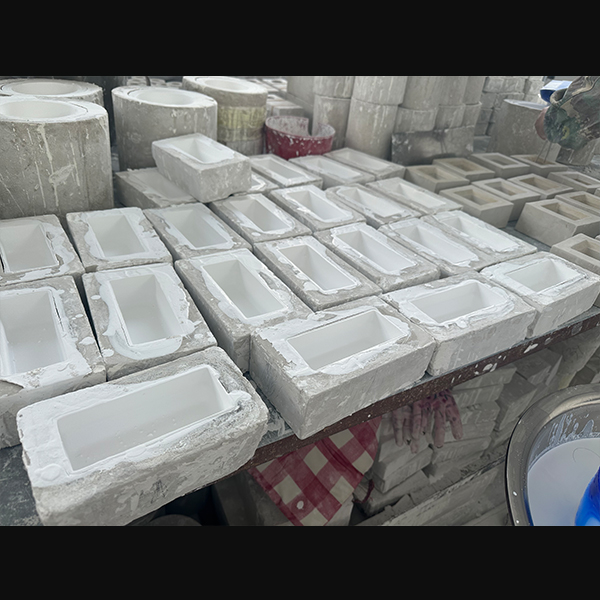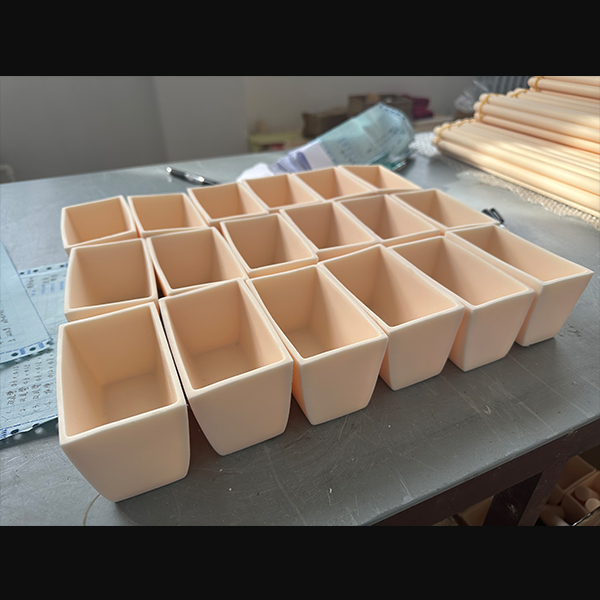In the vast field of modern industry, there is a material quietly playing a crucial role, which is industrial alumina ceramics. As an advanced ceramic material mainly composed of aluminum oxide (Al ₂ O ∝), industrial alumina ceramics have become an indispensable key material in many industries due to a series of outstanding properties.
Excellent performance creates extraordinary quality
Industrial alumina ceramics have many remarkable characteristics. Its hardness is extremely high, with a Mohs hardness of up to level 9, second only to the hardest diamond in nature. This characteristic gives it excellent wear resistance. After testing, its wear resistance is equivalent to 266 times that of manganese steel and 171.5 times that of high chromium cast iron. It can maintain good performance in harsh environments with high friction and wear, greatly extending the service life of related equipment.
In terms of high temperature resistance, industrial alumina ceramics also exhibit excellent performance, able to withstand temperatures up to 1600 ℃ or even higher. In such high temperature environments, they can still maintain stable physical and chemical properties without softening, deformation, or other problems. At the same time, it also has good chemical stability and strong resistance to chemicals such as acids and bases. It can maintain stability in various corrosive environments and is not easily corroded.
In addition, industrial alumina ceramics are excellent electrical insulators with good insulation properties, which can effectively prevent current from passing through and ensure the safe and stable operation of electronic devices. Moreover, its density is relatively low and its weight is light, which has significant advantages in some application scenarios with strict weight requirements.
Precision preparation to create high-quality materials
The preparation process of industrial alumina ceramics is complex and precise. There are various molding methods, including dry pressing, grouting, extrusion, cold isostatic pressing, injection, tape casting, hot pressing and hot isostatic pressing. In recent years, new molding technologies such as filter pressing, direct solidification injection molding, gel injection molding, centrifugal grouting molding and solid free molding have also been developed at home and abroad. Products with different shapes, sizes, complexities, and precision requirements require the use of different molding methods. For example, dry pressing technology is generally applicable to objects with simple shapes and inner wall thickness exceeding 1mm, with a length to diameter ratio of no more than 4:1; Grouting molding is suitable for manufacturing large-sized and complex shaped components.
The formed body still needs to go through a sintering process to densify the granular ceramic body and form a solid material. The commonly used heating device is an electric furnace. In addition to atmospheric pressure sintering, there are also methods such as hot pressing sintering and hot isostatic pressing sintering. Hot isostatic pressing sintering uses high-temperature and high-pressure gas as the pressure transfer medium, which has the advantage of uniform heating in all directions and is suitable for manufacturing complex shaped products. The material properties treated by it are 30-50% higher than those of cold pressing sintering and 10-15% higher than those of general hot pressing sintering. In addition, microwave sintering method, arc plasma sintering method, and self propagating sintering technology are also under development.
Widely applied to promote industry development
▶In the field of electronics, it is an indispensable and important material. Aluminum oxide ceramic substrate has good thermal conductivity and electrical insulation, which can effectively help chip heat dissipation while ensuring stable operation of the circuit. In the power amplifier of 5G base stations, the ultra-thin substrate made of alumina ceramic has a thermal conductivity speed five times that of traditional materials, which can reduce the chip temperature by 25 ℃, greatly extending the device life and expanding the signal coverage range. In addition, in the cavity of semiconductor etching equipment, high-purity alumina ceramics can withstand plasma corrosion and have a service life five times longer than metal components, providing reliable guarantee for chip manufacturing.
▶In the mechanical industry, industrial alumina ceramics are commonly used to manufacture various wear-resistant components such as bearings, sealing rings, valves, grinding wheels, etc. Its high hardness and excellent wear resistance can significantly improve the service life of these components and reduce equipment maintenance costs. For example, in the crusher of mining machinery, serrated lining plates made of alumina ceramics are used. Compared with traditional manganese steel lining plates, not only is the replacement frequency significantly reduced, but also there will be no debris pollution to the ore like metals, which improves the beneficiation grade of gold mines.
▶The chemical industry is also an important application area for industrial alumina ceramics. Due to its excellent chemical stability and corrosion resistance, it can be used to manufacture corrosion-resistant chemical equipment such as containers, pipelines, reactors, etc. In the reaction kettle of a certain chemical plant, alumina ceramic is used as the lining. The stainless steel lining plate, which needs to be replaced every six months, is still in good condition after three years of use, greatly improving production efficiency and reducing production costs.
▶In the aerospace field, the application of industrial alumina ceramics is also crucial. Its lightweight, high strength, and high temperature resistance make it an ideal choice for manufacturing engine components, spacecraft insulation materials, and more. For example, the alumina ceramic insulation tiles used in rocket engine components can withstand high temperatures of 1600 ℃ and weigh only one-third of metal components, effectively reducing the weight of spacecraft and improving performance.
▶Industrial alumina ceramics are injecting strong impetus into the development of modern industry with their excellent performance, precise preparation process, and wide application fields. With the continuous advancement of technology, we believe that industrial alumina ceramics will showcase their unique charm in more fields and play a greater role in promoting innovative development in various industries.



